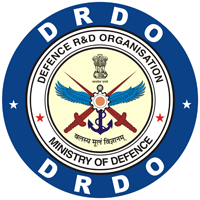Effects of Isothermal and Adiabatic Thermal Loadings on Size and Strain Rate Dependence of Copper Nanowire
DOI:
https://doi.org/10.14429/dsj.59.1518Keywords:
Metallic nanowires, sensors, nanosystems, copper nanowires, nanobridge structure, moleculer dynamics simulation, nano-electronic device fabrication, isothermal loading, thermal loading, adiabatic thermal loadingAbstract
In the present paper, the size and strain rate effects on ultra-thin <100>/{100} Cu nanowires at an initial temperature of 10 K have been discussed. Extensive molecular dynamics (MD) simulations have been performed using Embedded atom method (EAM) to investigate the structural behaviours and properties under high strain rate. Velocity-Verlet algorithm has been used to solve the equation of motions. Two different thermal loading cases have been considered: (i) Isothermal loading, in which Nose-Hoover thermostat is used to maintain the constant system temperature, and (ii) Adiabatic loading, i.e., without any thermostat. Five different wire crosssections were considered ranging from 0.723 x 0.723 nm2 to 2.169 x 2.169 nm2. The strain rates used in the present study were 1 x 109 s-1, 1 x 108 s-1, and 1 x 107 s-1. The effect of strain rate on the mechanical properties of copper nanowires was analysed, which shows that elastic properties are independent of thermal loading for a given strain rate and cross-sectional dimension of nanowire. It showed a decreasing yield stress and yield strain with decreasing strain rate for a given cross-section. Also, a decreasing yield stress and increasing yield strain were observed for a given strain rate with increasing cross-sectional area. Elastic modulus was found to be ~ 100 GPa, which was independent of processing temperature, strain rate, and size for a given initial temperature. Reorientation of <100>/ {100} square cross-sectional copper nanowires into a series of stable ultra-thin pentagon copper nanobridge structures with dia of ~ 1 nm at 10 K was observed under high strain rate tensile loading. The effect of isothermal and adiabatic loading on the formation of such pentagonal nanobridge structure has been discussed.
Defence Science Journal, 2009, 59(3), pp.252-259, DOI:http://dx.doi.org/10.14429/dsj.59.1518
Downloads
Published
How to Cite
Issue
Section
License
 Where otherwise noted, the Articles on this site are licensed under Creative Commons License: CC Attribution-Noncommercial-No Derivative Works 2.5 India
Where otherwise noted, the Articles on this site are licensed under Creative Commons License: CC Attribution-Noncommercial-No Derivative Works 2.5 India

